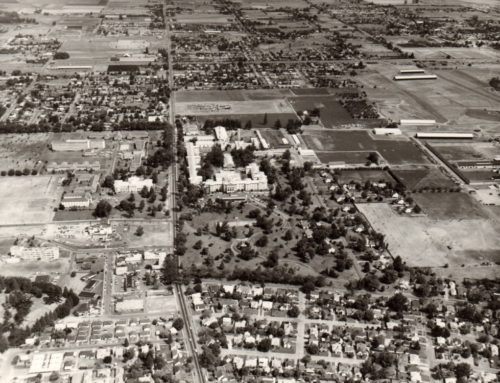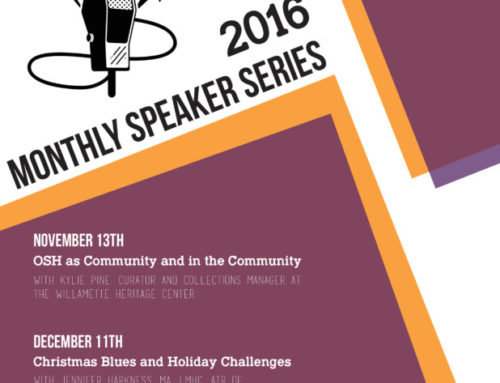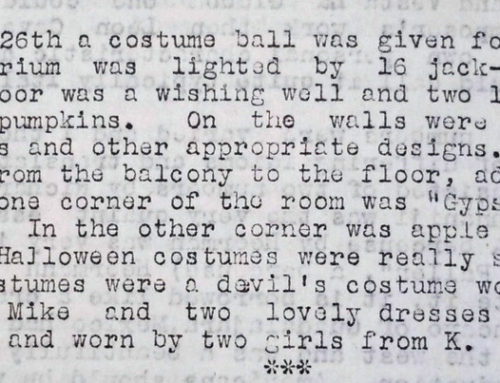Capital Journal Photo, 1953.
The following history was compiled for the 75th Anniversary edition of the Oregon State Hospital Publication, The Lamplighter in1958. It was written by R. H. Miller.
From Rags to Research
This month we are reviewing the history of the O.T. Department. It is brief because the department, as we know it today, is a comparatively recent addition to O.S.H.
Occupational Therapy activities have had a long history in mental hospitals. Work and other types of activities have long been used at O.S.H. The present Sewing room and old Art Room were the early predecessors of O.T. The work there was mainly basket weaving, rag rug making, sewing and fancy work.
The formal beginning of the O.T. department was in February, 1950. At that time the department consisted of one O.T., one room and one basket. The room was one of the living rooms on the fourth floor Center Building and the O.T. carried materials around to various wards.
Mrs. Rowe, the original Occupational Therapist, left after about six months, but the first Therapist Aide, Mrs. Branch, has continued with the department. For the benefit of new employees, who may not appreciate the eight-hour day, Mrs. Branch worked twelve hours per day — four hours on the wards as an attendant, and eight hours in O.T. After Mrs. Rowe’s departure, Mrs. Branch was the only member of the staff for several months. Since that time there have been many increases and changes in personnel. The only “Old-Timers” now, are Mrs. Branch and Mrs. Sullivan, seven years in O.T. and Mr. Miller, present Director of the department, who is just beginning his seventh year.
The most spectacular change, aside from larger staff, is the increase in facilities and improvement of the program. Besides the original room on the fourth floor Center (since expanded to three and just recently made more useful by an opening cut between them) the department now has two large basement rooms in the Forty Building. In addition we continue with several ward programs.
Rags are still very useful material; activities from them include ripping, cutting, sewing, winding, and then all the different types of rug making. These may be purchased and kept by the patient making them or sent to various wards which request them. In addition, we have available today such diversified activities as ceramics, copper enameling, leather work, wood work, gardening, all types of needle-work, printing, oil painting and many others. All of these are used as one of the many ways of helping the patient in his treatment and rehabilitation.
The O.T. Department also provides many other services to the hospital and the patients. Those include printing, re-covering lamp shades, pictures, name tags for employees, et cetera.
The most recent development in the department is our participation in the Rehabilitation Research Project. This is a pioneer effort in Oregon, and we hope that many useful developments will come from it.



